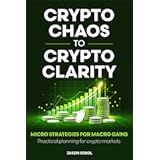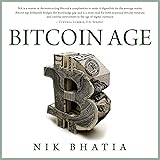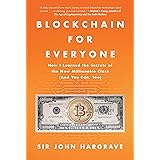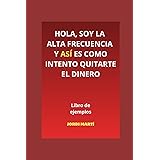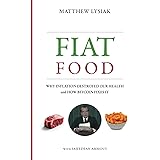Mastering the Crypto Exchange: Your Gateway to Digital Asset Trading Fundamentals
For those venturing into the dynamic world of digital assets, understanding the mechanics of a cryptocurrency exchange is absolutely paramount. As the accompanying video expertly introduces, these platforms serve as the crucial meeting point where buyers and sellers converge to trade various cryptocurrencies, from Bitcoin to Ethereum and countless others. Building upon that foundational overview, this article will delve deeper into the core components and essential order types that empower individuals to execute informed trades. By grasping these fundamental principles, you can navigate the complexities of a crypto exchange with greater confidence and efficiency, ultimately striving to trade like a seasoned professional.
The Foundation of Digital Asset Trading: What is a Cryptocurrency Exchange?
At its essence, a cryptocurrency exchange functions as a digital marketplace, facilitating the buying and selling of various cryptocurrencies. This sophisticated platform provides the necessary infrastructure for users worldwide to interact, place orders, and execute trades seamlessly. Unlike traditional stock exchanges that operate during set hours, many crypto exchanges operate 24/7, reflecting the global and continuous nature of the cryptocurrency market. Key visual elements on such a platform typically include the candle graph, which illustrates price movements over time, alongside sections for your open orders and a history of recent trades.
The core functionality revolves around matching willing buyers with willing sellers. For instance, if you wish to purchase Bitcoin, the exchange connects your buy order with a seller’s corresponding sell order. This intricate process ensures a fair and transparent trading environment for all participants. Understanding these foundational aspects is the first step toward effectively engaging with the digital asset market.
Decoding the Order Book: Bids, Asks, and Matching Trades
Central to any cryptocurrency exchange is the order book, a dynamic list displaying all active buy and sell orders for a particular asset. This real-time ledger provides profound insights into market sentiment and available liquidity. Specifically, the order book meticulously segregates orders into two distinct categories: bids and asks.
Bids represent buy orders, signifying the prices at which traders are prepared to purchase a cryptocurrency. These are conventionally displayed in green, indicating a demand for the asset. Conversely, asks, often shown in red, are sell orders, detailing the prices at which traders are willing to sell their cryptocurrency. Each entry in the order book waits patiently for a matching order to arrive, at which point the trade is executed. For example, if a seller places an ask order for 1 Ethereum at $3,000, that order will reside in the order book until a buyer places a bid order at or above $3,000, triggering the transaction.
Understanding Maker and Taker Orders: Adding vs. Taking Liquidity
Within the ecosystem of a crypto exchange, orders are further classified as either “maker” or “taker,” a distinction that significantly impacts market liquidity and often influences trading fees. This classification depends on whether an order adds to or removes from the existing order book.
A **maker order** is characterized by its intent to add liquidity to the market. This typically involves a limit buy order placed below the current market price or a limit sell order positioned above it. Since these orders are not immediately matched, they enter the order book and wait, effectively “making” the market by providing available buy and sell interest. Traders who place maker orders are often rewarded with lower trading fees, or even rebates, as they contribute to the market’s depth and efficiency. Consider the example from the video: James creates a maker limit sell order for 1 XRP at $1. This order sits in the order book, adding to the pool of available XRP for sale.
In contrast, a **taker order** is designed for immediate execution and consequently removes liquidity from the market. This type of order involves buying at or above the current market price or selling at or below it. Taker orders are matched instantly with existing maker orders in the order book, effectively “taking” that liquidity out of the market. Taker orders typically incur higher trading fees due to their demand for immediate fulfillment. Continuing our example, if Sherry then places a buy order for 1 XRP at the market price, which matches James’ $1 sell order, Sherry’s order is a taker order. It executes immediately by fulfilling James’ waiting maker order, thus taking liquidity from the order book. This distinction is vital for understanding fee structures and your impact on market depth.
Navigating Order Types: Market, Limit, and Stop Orders on a Crypto Exchange
Executing trades on a cryptocurrency exchange requires a clear understanding of the various order types available. Each type serves a specific purpose, allowing traders to manage risk, control price, and achieve their desired trading outcomes.
Market Orders: Instant Execution at Current Price
Market orders are the simplest and fastest way to buy or sell a cryptocurrency. When you place a market order, you are instructing the exchange to execute your trade immediately at the best available price in the order book. Because these orders execute without delay, they are always considered taker orders. Market orders prioritize speed of execution over a specific price point. For example, if you urgently need to acquire Bitcoin, a market buy order will instantly match with the lowest available ask orders, ensuring your purchase is completed without waiting, albeit at the prevailing market rate.
Limit Orders: Precision and Price Control
Limit orders offer traders precise control over the price at which their trade will be executed. By placing a limit order, you specify both the amount of cryptocurrency you wish to trade and the exact price you are willing to buy or sell at. If your specified price is not immediately available in the order book, the order will wait until a matching price becomes accessible. This waiting period allows limit orders to act as maker orders, adding liquidity to the market. However, a limit order can also behave as a taker order if the price you set happens to be immediately executable against existing orders. For instance, placing a limit buy order for Ethereum at $2,950 when the current price is $3,000 means your order will only fill if the price drops to $2,950 or lower, offering price discipline.
Stop Orders: Protecting Profits and Limiting Losses
Stop orders are powerful risk management tools designed to automatically trigger a trade when a cryptocurrency’s price moves past a predetermined level. This mechanism enables traders to protect against potential losses or to capitalize on price movements without constant monitoring. When the specified “stop price” is reached, the stop order converts into a market order (or a limit order in the case of a stop-limit order) and executes at the best available price. For example, if you own Bitcoin purchased at $40,000 and you set a stop-sell order at $38,000, your Bitcoin will automatically be sold if the price falls to that level, limiting your potential downside. This is particularly useful for traders who cannot constantly monitor market fluctuations, allowing for peace of mind, especially during volatile periods.
There are several variations, including buy stop orders (used for entering a trade when a certain resistance is broken or covering short positions) and sell stop orders (primarily for loss prevention). The video mentions going to the pub; essentially, stop orders automate your trading decisions, ensuring your strategy is followed even when you are not actively watching the market.
The Bid-Ask Spread: A Window into Market Stability and Liquidity
The bid-ask spread is a crucial indicator of a cryptocurrency market’s health and liquidity, representing the difference between the highest price a buyer is willing to pay (the highest bid) and the lowest price a seller is willing to accept (the lowest ask). This seemingly small gap can tell a significant story about the underlying market dynamics on any crypto exchange.
A lower spread, such as the $1 difference mentioned in the video, typically signifies a healthy, stable, and highly liquid market. In such conditions, there are numerous buyers and sellers, and their price expectations are closely aligned, facilitating quick and efficient trade executions. This environment generally leads to lower transaction costs and less price slippage for traders.
Conversely, a wide bid-ask spread, illustrated by a $100 difference, indicates an illiquid or potentially unstable market. This can occur when there are insufficient buyers and sellers to meet demand, or when there is a significant divergence in opinion regarding the asset’s fair value. Trading in markets with wide spreads can result in higher effective transaction costs, as you might buy at a significantly higher price than the best bid or sell at a much lower price than the best ask. Understanding the bid-ask spread is therefore critical for assessing market conditions and planning your trades on any cryptocurrency exchange effectively.


